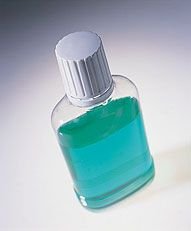 The Food and Drug Administration classifies mouth rinses into two categories - therapeutic and cosmetic.
The Food and Drug Administration classifies mouth rinses into two categories - therapeutic and cosmetic. In general, therapeutic rinses with fluoride have been shown to actually fight cavities, plaque and gingivitis.
On the other hand, cosmetic rinses merely treat breath odor, reduce bacteria and/or remove food particles in the mouth. They do nothing to treat or prevent gingivitis.
People who have difficulty brushing (because of physical difficulties such as arthritis) can benefit from a good therapeutic mouth rinse.
Caution: Even rinses that are indicated to treat plaque or cavities are only moderately effective. In fact, regular rinsing with water and use of good quality fluoride toothpaste are just as or more effective.


